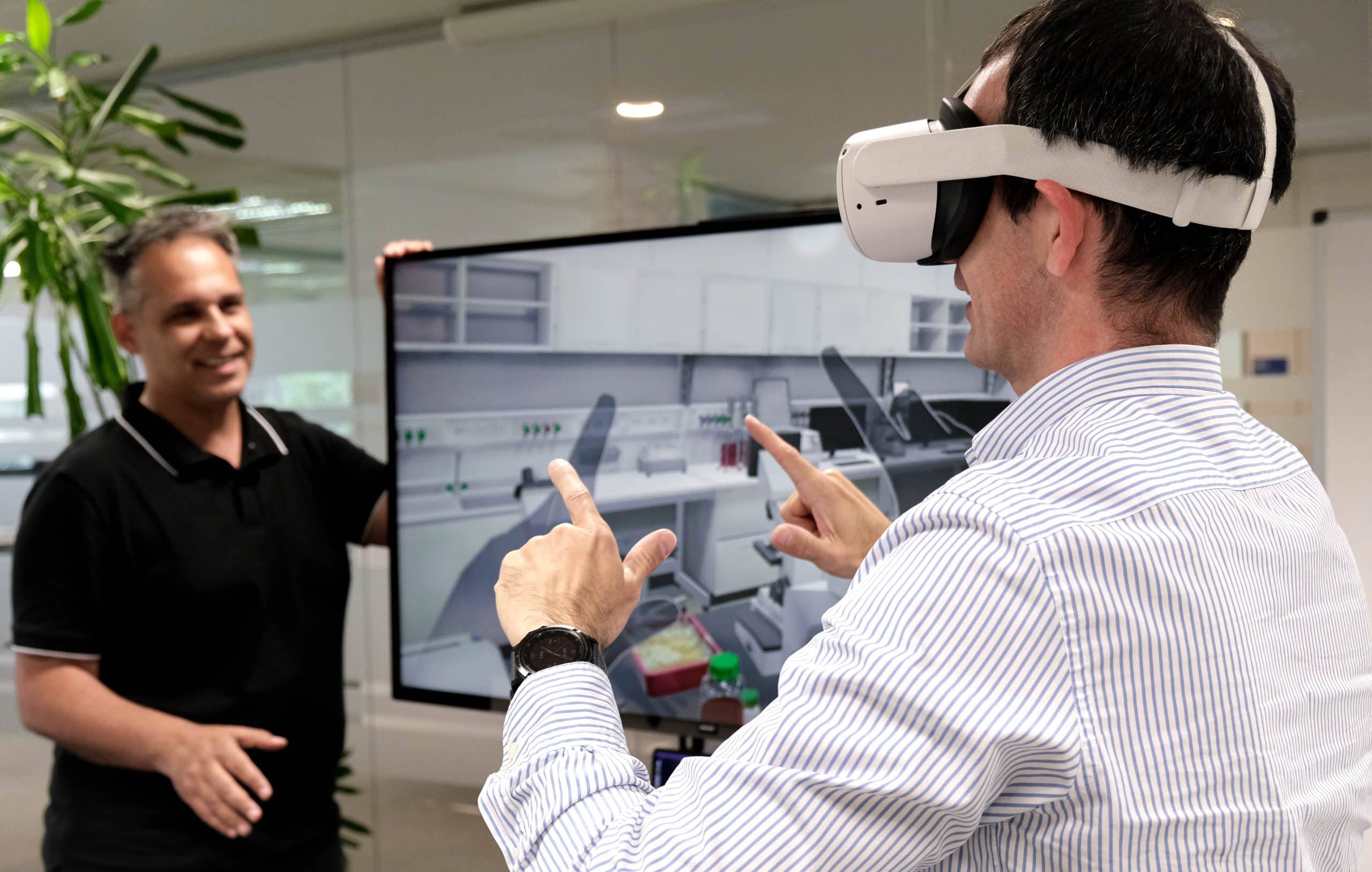Life becomes a game
Life is a game, it is often said. And somehow that’s true. In relation to the fourth industrial revolution, the sentence should be formulated differently: Life is being influenced more and more by play. In fact, any new technology that allows people to expand their knowledge or control over something is augmented reality. In this sense, our reality is in principle almost infinitely expandable. Just like the invention of the telescope, the microscope opened up new worlds to the human eye. Nowadays, it is possible to check the weather at a holiday destination via webcam or to control the shutters in the living room at home from your holiday. It’s all augmented reality.
New sensory organs
The possible applications of augmented reality in an industrial context are primarily concerned with maintenance and the control of industrial processes. Here, humans are equipped with new sensory organs, so to speak: Displays, statistics, recommendations for action, error messages, etc. In everyday life, the smartphone is the best example of this kind of expansion of our perception. Just as we have various displays in computer games about health, points, playing time and the like, we also increasingly have new information in reality. Let’s face it, the smartphone has long since become an indispensable organ of our respective realities in our civilisation. So in this sense, life is actually becoming more and more a game or is being outsourced and expanded into a digital reality.
The fourth industrial revolution is primarily an industrial digitalisation. Machines are becoming smarter, the world more and more connected. Augmented reality makes it possible, for example, for doctors to check up on their patients remotely. Augmented reality also enables the implementation of a truly hyperconnected smart factory. In this smart factory, autonomous machines communicate constantly not only with each other but also with their users through edge computing. Understanding this language requires augmented reality, an extension of our reality, which means nothing else than: our perception. In Industry 4.0, it is indispensable: augmented reality provides data for meaningful insight into the smart factory; through augmented reality, planned maintenance and inspections can take place. Even operational training and operator training can be carried out – via virtual reality.
New worlds
It is an old dream of mankind to enter unknown areas. Only 100 years ago, however, hardly anyone would have dreamed that these would initially be digital in nature in the future. Just as everything in computer games used to consist of rough pixels and two-dimensional worlds and is now becoming more and more complex and lifelike, augmented reality is also developing from simple displays to real alternative realities. How we interact with computer graphics has not changed significantly from viewing 2D elements since their invention. Latest developments in computing technology and gaming are driving the design and development of new ideas in other modes of human-computer interfaces (HCIs). VR and AR use computers and HCIs to create the feeling of immersion in a three-dimensional (3D) environment that contains interactive objects with a sense of presence in real space.
We already meet in meetings with people from all over the world in digital spaces, which is also a form of augmented reality. Through augmented reality, the user can visualize step-by-step procedures of the task to be performed or even get visual instructions in real time from experts with remote assistance systems. The main advantage is the ability to present real-time contextual information to employees, which can help them and the machines around them to work more efficiently and accurately.
Another area of application is predictive maintenance, for example. In factories, you have a table of data or IT numbers of all the equipment on site and you can check their status, but when you have hundreds of pieces of equipment, it can be very inconvenient to read the tabular data. With AR, you take the device (headset, phone or tablet) into the factory and easily and quickly visualise the status of everything in view. You can point the device at machines and have it automatically detect them (without having to search for machine IDs). Then you can visualise its readings, e.g. you would see the scanned values like current temperature or pressure directly above a valve on your screen, not in a separate table. If the values are outside your ideal ranges, you will receive a visual warning. For example, a machine will be highlighted in red if maintenance is urgently required, along with the expected failure date. A table with machine IDs and measurements is difficult to process, this way it works much more efficiently. Since technological development is exponential, it is hard to foresee what breakthroughs and mergers the near future has in store for us.
We at ERNI have the expertise in consulting and development/operation of individual software solutions to implement Augmented Reality in your environment.

